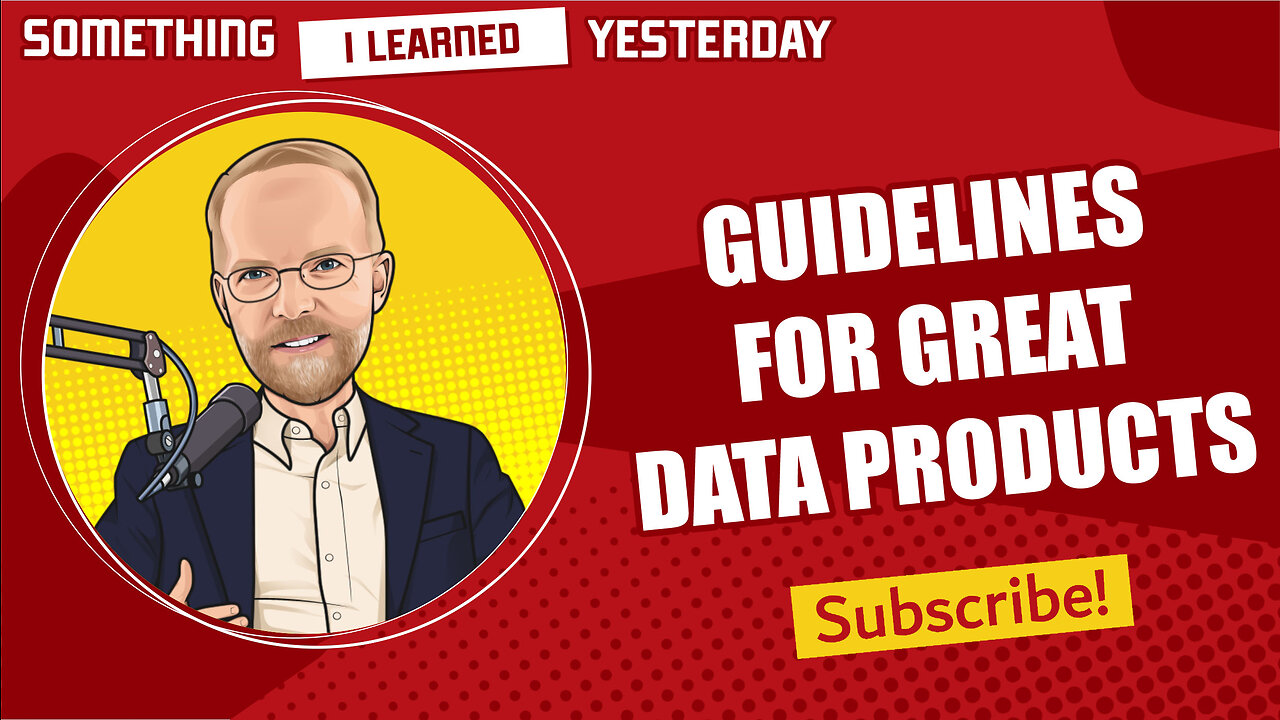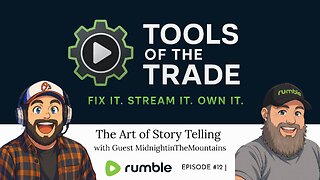Premium Only Content

Guidelines for creating a successful data product
Data products require a little more than your standard product development rules
Renewd sponsored a webinar yesterday titled “Unlocking insights: How to collect and transform large volumes of data to successfully build a new data product.”
If you’re not a member of Renewd, please consider joining. It’s a good group. I’ll provide a link below.
Today I’m going to summarize what I heard in that webinar, because many publishers are thinking about creating a data product. That’s a good idea because data products are often valued by investors more highly than text- and analysis-based products.
Before you start down that road, here are some foundational principles and perspectives to keep in mind. Most of this is from the webinar, but of course I have to add my own perspective and spin.
Follow a Customer-Centric Approach
The foundation of a successful data project lies in understanding the value it brings to the customer, not just to your business. To do this effectively, ask yourself who the project is for and, equally importantly, who it is not for. Disqualification is often as vital as qualification, as it prevents resources from being wasted on irrelevant targets.
What problem are you solving?
A clearly defined problem provides direction and ensures your project has a tangible impact and a clear benefit.
Also, consider how your product fits into the customer's workflow. Consider how the data might need to be transformed on the customer side, who gets to see it, and what value it brings to the customer are vital components in this process.
Focus on “must have” not “nice to have” solutions.
Do objective qualitative research
When you’re considering a new data product, you need to do market research to find out what your potential customers want. You need to avoid "happy ears" in this process, where you hear what you want to hear. It’s crucial to get an objective perspective on what the market really needs, and not just confirm your own biases.
After you do this qualitative research, follow it up with quantitative research to find the size and scope of your potential market.
It’s also important to encourage collaboration across functional areas within your team to avoid internal biases.
Remember Gall's Law
Gall's Law says, "A complex system that works is invariably found to have evolved from a simple system that worked.” Start with something small that works in the real world and build from there. Avoid the mistake of overcomplicating things from the outset, and focus on building a strong foundation first.
Data Structure
Understand your data inputs thoroughly. Consider whether and how data needs to be transformed and establish robust data governance rules. Define the quality of the output you aim to achieve, and foster a data culture within your organization, ensuring that everyone understands the data's meaning and relevance.
Product Differentiation
To differentiate your data product in the market, consider three angles.
Completeness: Determine how complete your data set needs to be to meet customer needs. It's not always necessary to get 100% coverage; sometimes, 70% can suffice.
Accuracy: Assess how accurate your data needs to be. Remember that higher accuracy often comes with increased costs, and sometimes additional accuracy isn’t worth the expense.
Timeliness: Evaluate the speed of updates, and how quickly you need to deliver updated data. Some clients may require real-time updates, while others may accept periodic reports.
Seeing around corners
The cutting edge of value in a data project lies in providing insights into "what's coming next." Even if the predictions have low confidence, giving customers a glimpse of future trends and opportunities can be invaluable.
Remember the Four Vs of Data
The four Vs are Volume, Velocity, Veracity, and Variety. Consider each as you shape your data project.
Data Transformation
There are three key areas of data transformation to consider in your project:
Extraction: Focus on how you will extract the data you need from the sources you have to work with. For example, you may have to pull specific fields out of a string of undifferentiated text.
Cleansing and Normalizing: You want all your data to have the same format. For example, you could convert all addresses to post-office standards, or all your time data into GMT.
Mapping: How is your data taxonomy going to map to the taxonomy used by your clients? A data product has to be more than internally consistent and logical: it has to work with your client’s systems.
In summary, a successful data project requires a customer-centric approach, clear problem-solving, robust data structure, effective differentiation, and a focus on the edge of value. Following these principles and considering the specific needs of your target audience will help you develop a product that will bring substantial value to both your customers and your business. Start small with something that works in the real world, then build on what you have based on how your customers actually use the service. Stay flexible and don’t let your internal assumptions get in the way of creating something your customers can actually use.
Resources
Renewd.net
https://renewd.net/
Unlocking insights: How to collect and transform large volumes of data to successfully build a new data product
https://renewd.net/?resources=unlocking-insights-how-to-collect-and-transform-large-volumes-of-data-to-successfully-build-a-new-data-product
-
 1:01:33
1:01:33
Jeff Ahern
2 hours ago $4.64 earnedThe Saturday Show with Jeff Ahern
22.4K12 -
 18:08
18:08
Professor Nez
3 hours ago🚨HOLY CRAP: Members of Congress Call for Military INSURRECTION!
83.8K63 -
 4:14:26
4:14:26
Grant Cardone
6 hours agoHow to Buy Real Estate With NO Money Down (LIVE Training With Grant Cardone)
89K4 -
 LIVE
LIVE
AlaskanBallistics
13 hours ago $1.66 earnedShooting the WhisperStrike WT30 Live!
141 watching -
 19:53
19:53
MetatronHistory
19 hours agoRome VS Greece - Ultimate Clash of Civilizations Explained
44.4K12 -
 LIVE
LIVE
The Big Mig™
5 hours agoThe Big Mig Show's Greatest Hits w/ Americas Future, Karmageddon, Operation Gideon,..
184 watching -
 1:32:33
1:32:33
VapinGamers
4 hours ago $5.95 earnedTools of the Trade - EP12 The Art of Story Telling with MidnightinTheMountains - !rumbot !music
29.3K2 -
 3:09:50
3:09:50
SOLTEKGG
4 hours ago🔴LIVE - Battlefield 6 - Going Pro in RED SEC
24.9K1 -
 5:19:03
5:19:03
Midnight In The Mountains™
5 hours agoThe Midnights Play Arc Raiders | Loot Scoot and KILL | Crypto Wallet up n running GO JOIN THE BETA!
20.5K3 -
 53:25
53:25
X22 Report
7 hours agoMr & Mrs X - Trump Is Using The Same Tactic As Our Founding Fathers To Rebuild America - EP 17
96.1K33